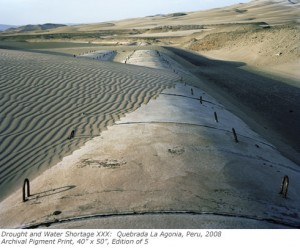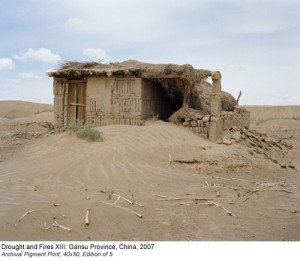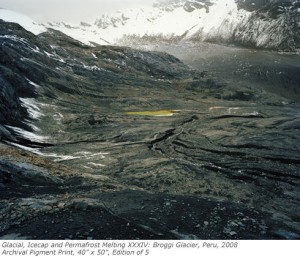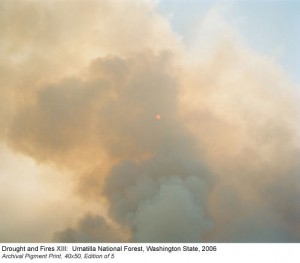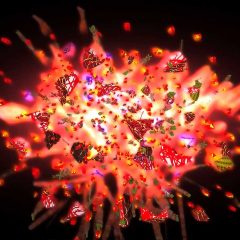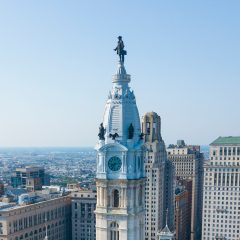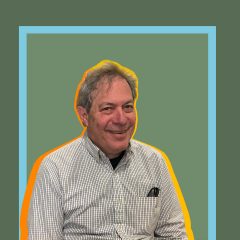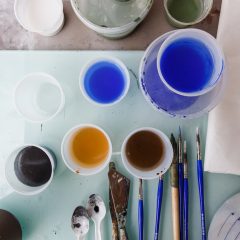This summer, the Gershman Y‘s two galleries host exhibitions intended to stimulate conversation around climate change. I slipped gratefully into the air-conditioned spaces on an extremely-hot, late June day.
In the Open Lens Gallery are Susan Sayler and Edward Morris’s sweeping photographic images of glaciers, deserts, forest fires, and icecaps: bleak landscapes studied by scientists for evidence of climate change, part of their long term project A History of the Future.
“Drought and Fires XIX: Gansu Province, China, 2007” depicts a former farm building, eroded by the advancing desert. In the dust of what might once have been a lawn, or space for grazing animals, lie dry, white sticks strewn like bones.
Next to “Glacial, Icecap and Permafrost Melting LI: Cordillera Blanca, Peru, 2008” is a wall label describing the projected impact of glacial melting on Peru’s farming economy. 70% of the country’s water comes from icy regions; if the ice disappears, drought will follow.
Covering six continents in eight photographs, we see the broad scope of current environmental damage. But the works’ sheer beauty can act as an anesthetic to their depiction of large-scale trauma. The artists acknowledge this, describing each individual image as “a blank stare” that obtains meaning only through its context within “scientific, journalistic, activist and artistic” discourse, with which they continuously engage.
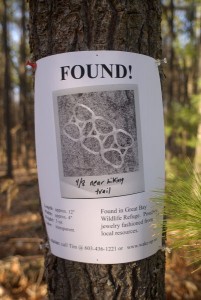
This concern with context continues in the Borowsky Gallery’s exhibition Turn Here: Artists promoting environmental awareness. The show features four artists using photography, ephemera, text, and installation to represent projects and experiences that took place outdoors and, often, far away from Philadelphia.
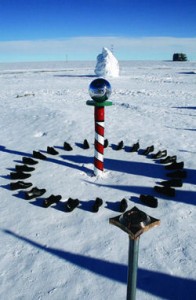
Xavier Cortada’s “Longitudinal Installation (2007-ongoing)” is an evolving project involving research, travel, installation, and ceremony. In the gallery, photographs document temporary circles made around the North and South poles using smart, black shoes that represent 24 compass points. At the poles, Cortada recited quotations from politicians and conservationists from each longitudinal area about their environmental worries. A similar circular space is delineated on the gallery floor, though its rather battered shoes lose a little magic by being detached from their mythical locations and ritual purpose. Visit the artist’s website to upload details of your own experience of climate change.
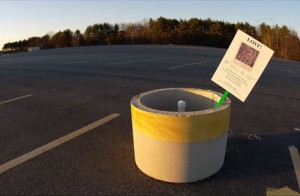
Community-engaged artists Helen Lessick and Tim Gaudreau each use hand-made signage to spark critical thought and action around unromantic issues, such as soil quality and recycling. Gaudreau’s Lost and Found series of Xeroxed signs get posted around development areas in New England, while Lessick worked with Kenyan sign painters in Nairobi to remind local produce growers to take care of their soil.
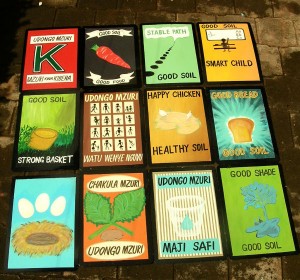
Because much of Turn Here is devoted to documenting artists’ projects, the gallery is filled with leftovers and abstractions: maps, photographs, preparatory studies that had a distancing effect as I explored the gallery. Balancing this by providing an immersive, embodied experience is Amie Potsic’s fluid installation “Endangered Seasons.” It is an imaginative example of photography as installed performative object, in the vein of recent Philadelphia exhibitors Matt Giel (at Grizzly Grizzly in an exhibit I curated) and Jennifer Bolande (at ICA). Evoking a stage set, four receding sets of curtains shimmer with high definition prints of tree branches in season. Spring’s bright pink blossoms, summer’s acid green, fall’s deep red, and winter’s shades of gray are layered with an orderliness that cuts against nature’s tumult. Walking through the glossy swathes, I got the sense of time peeling away behind me – an experiential reminder of the urgency of our environmental situation.
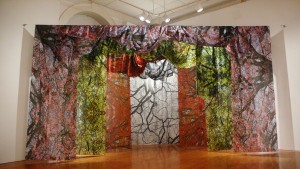
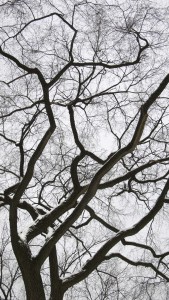
Borowsky Gallery and Open Lens Gallery in the Gershman Y on South Broad Street are open seven days a week until August 12.


